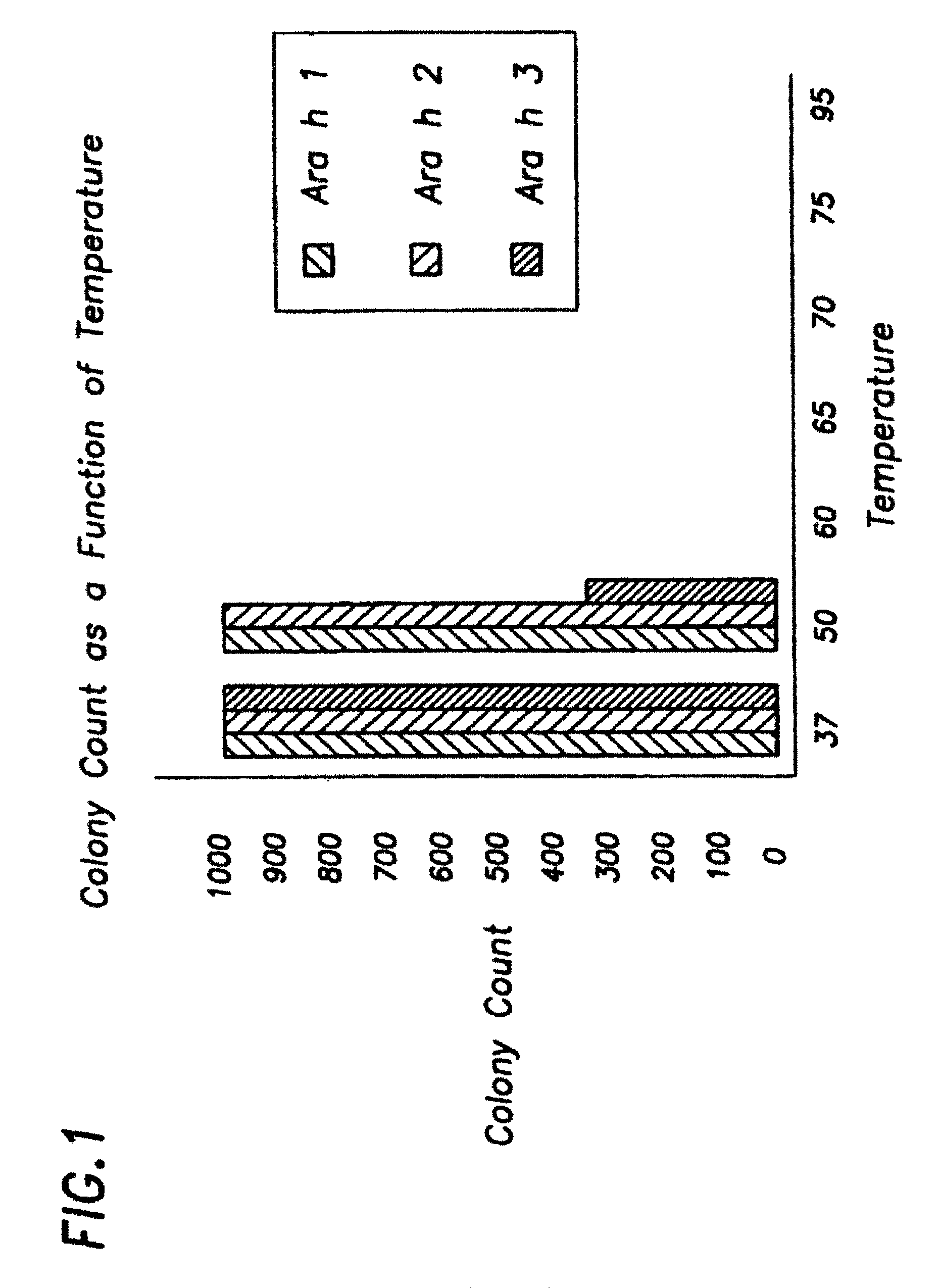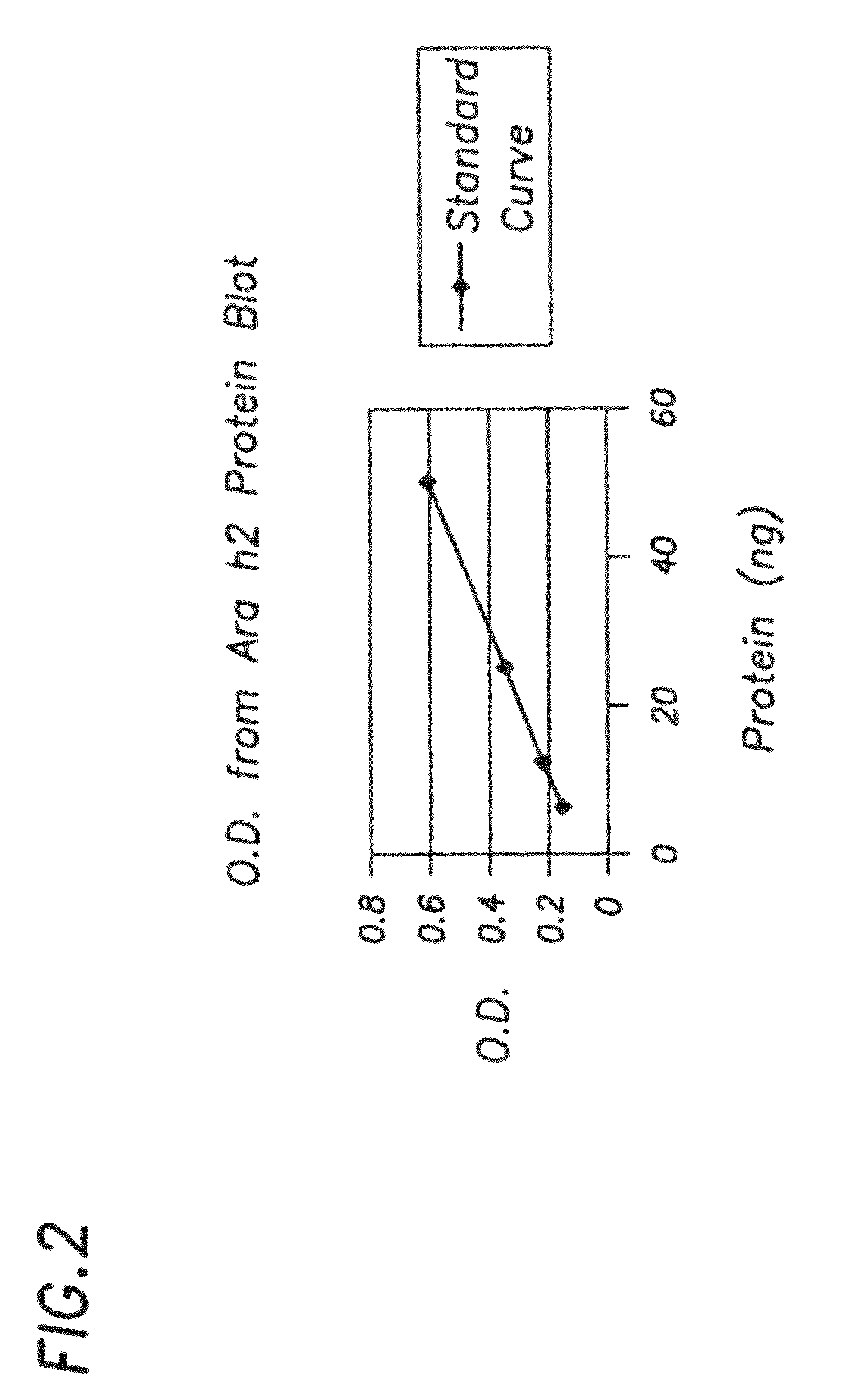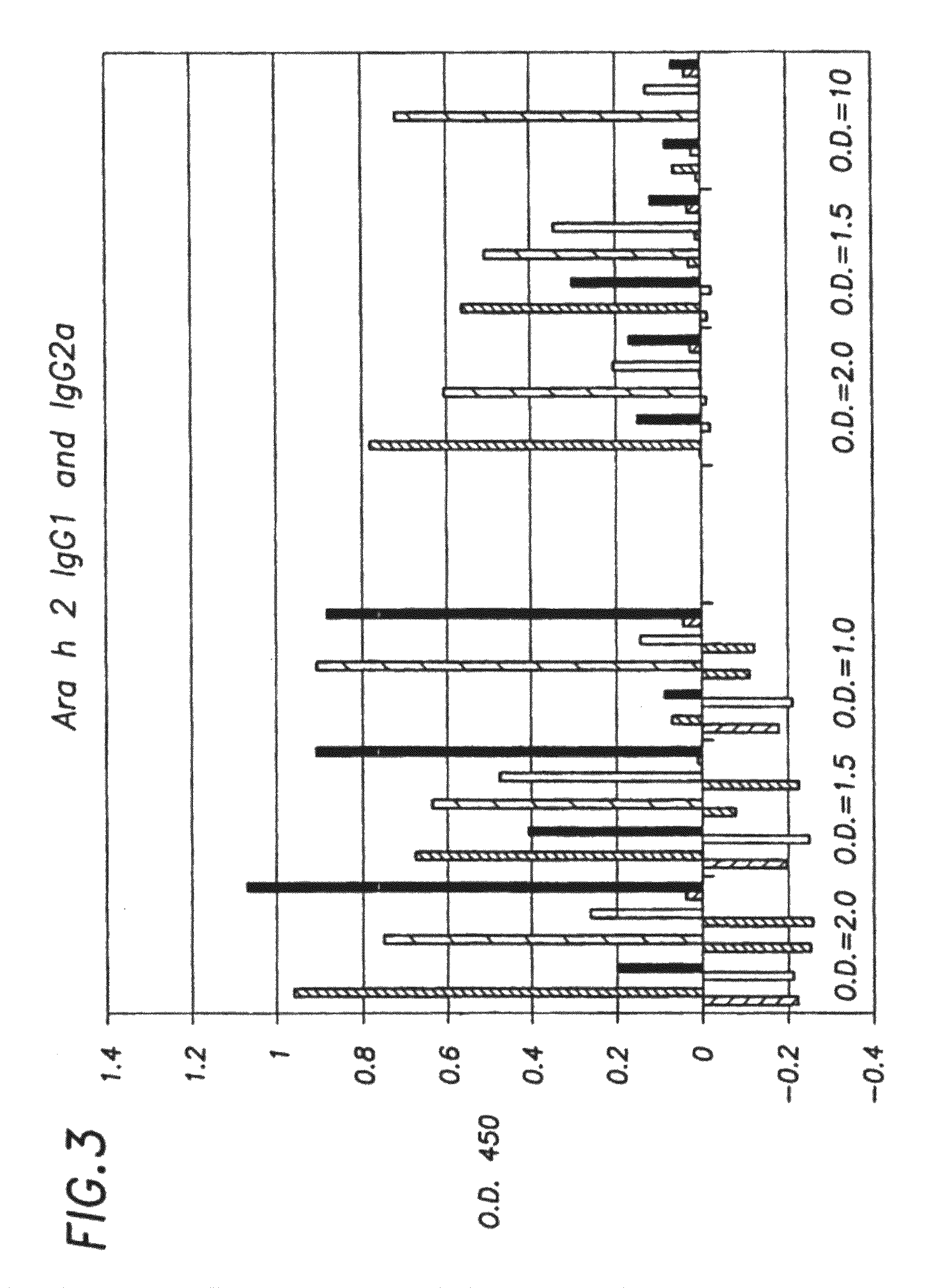Microbial delivery system
a delivery system and microorganism technology, applied in the field of microorganism delivery systems, can solve the problems of allergic reactions and possibly anaphylaxis, and achieve the effects of reducing the risk of anaphylaxis, preventing undesirable allergic reactions and allergic reactions, and reducing the exposure of allergens
- Summary
- Abstract
- Description
- Claims
- Application Information
AI Technical Summary
Benefits of technology
Problems solved by technology
Method used
Image
Examples
example 1
Methods of Killing Allergen-Producing E. coli
[0125]Several methods of killing allergen-producing E. coli were tested. Preferably, the method of killing bacteria does not denature or proteolyze the recombinant allergen(s) produced by the bacteria. As non-limiting examples, E. coli were killed by heat (at temperatures ranging from 37° C. to 95° C.), by using ethanol (0.1% to 10%), and by using solutions containing iodine (0.1% to 10%). Survival was determined by plating 100 μl of cells onto the appropriate agar plates, and subsequently counting the resulting colonies. The most reproducible method was heat killing. Therefore, the preferred method of killing allergen-producing E. coli is to incubate the cells at 60° C. for 20 minutes which results in 100% death (i.e. no colonies formed; see FIG. 1).
example 2
Growth of Bacteria
[0126]The following protocol was developed for the preparation of allergen-producing E. coli cells for inoculation of mice.
Day 1
[0127]Five milliliters (ml) of liquid cultures of LB (Luria-Bertani broth) containing kanamycin (30 micrograms / ml per each cell line used) were prepared in 50 ml sterile tubes or flasks. Cultures were inoculated with approximately 10 microliters from a frozen stock of the desired bacterial cell line containing the desired expression vectors. The inoculated cultures were incubated with shaking overnight at 37° C.
Day 2
[0128]The following morning, 100 ml of liquid LB (500 ml Erlenmeyer flask) containing kanamycin (30 micrograms / ml) were inoculated using a 1 ml aliquot from the 5 ml culture grown from the previous day. (The remaining 4 mls of culture were frozen. Optionally, the remaining 4 milliliters of culture can be stored at 4° C. for several weeks for inoculating subsequent cultures) The inoculated cultures were incubate with shaking at ...
example 3
Production and Release of Allergen
Release of Allergen by Heat-Killed Bacteria
[0131]In order to determine if the cells remained intact after heat-killing we measured the amount of allergen released into the media. A dot-blot assay was developed that utilized as controls, purified recombinant allergens applied to a filter at known concentrations and serum IgE from peanut sensitive patients. The assay detected and quantified the amount of allergen present in 100 microliters of supernatant after pelleting heat-killed bacteria. The level of allergen released varied and was dependent on the expression vector and protein tested. In general, more Ara h 2 was released than Ara h 1 and Ara h 3 (Ara h 2>>Ara h 1>Ara h 3).
Production of Allergen
[0132]In order to measure amounts of allergen in E. coli, we developed an immunoblot assay that utilizes a six histidine tag (HIS tag) that is present on all of our purified recombinant allergens and a HIS tag antibody to build a standard curve that could...
PUM
| Property | Measurement | Unit |
|---|---|---|
| time | aaaaa | aaaaa |
| optical density | aaaaa | aaaaa |
| molecular weight | aaaaa | aaaaa |
Abstract
Description
Claims
Application Information
 Login to View More
Login to View More - R&D
- Intellectual Property
- Life Sciences
- Materials
- Tech Scout
- Unparalleled Data Quality
- Higher Quality Content
- 60% Fewer Hallucinations
Browse by: Latest US Patents, China's latest patents, Technical Efficacy Thesaurus, Application Domain, Technology Topic, Popular Technical Reports.
© 2025 PatSnap. All rights reserved.Legal|Privacy policy|Modern Slavery Act Transparency Statement|Sitemap|About US| Contact US: help@patsnap.com



